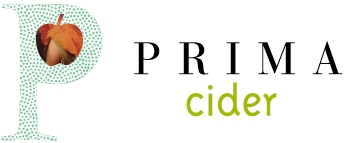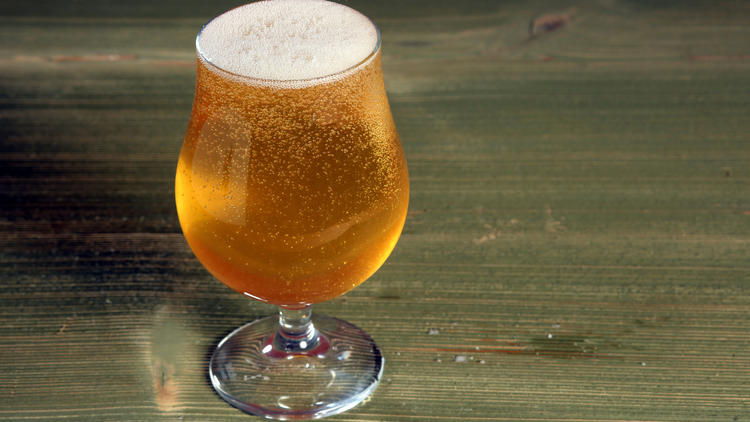The first Cider Summit was held in Seattle in 2010. It drew fewer than 500 people.
Six years later, the cider festival has also sprung up as an annual event in Portland and San Francisco, but the biggest version, which is expected to draw close to 4,500 people across two sessions on Saturday, is in Chicago.
About 140 ciders will be poured from 48 cider makers (from the Northwest, New England and Midwest, as well as France, Canada, Spain, England and German), and for the first time, cider cocktails will be available, including from coming cider bar The Northman. The sessions will be staged at Navy Pier between 11 a.m. and 3 p.m. and 4 to 8 p.m.
Tickets, which cost $35 for eight four-ounce pours and a souvenir glass, will be available until 11:59 p.m. Friday at cidersummit.com. Tickets will not be available at the door. (Additional pours, however, can be purchased after the initial eight at the festival for $2 each.)
Before the cider starts to flow, we talked with Cider Summit founder Alan Shapiro to check on the state of an industry that has seen wild growth and innovation in recent years.
Q: The rise of cider during the past five years has been fascinating to watch. Creatively, where is cider now?
A: There’s a lot of finding its identity and explaining its identity to consumers. I talk to cider makers a lot about the evolution of wine in the 70s and 80s, and craft beer in the late 80s up until now. It wasn’t all that long ago that craft beer had 2 percent of the total beer market. (Now it is at 11 percent.) Cider has crossed 1 percent of the total beer category. So there’s plenty of upside. It’s just taking several different paths. There are a lot of taste profiles out there, and they’re not what people would have tasted during the mid 90s, when cider was essentially a new generation wine cooler. That’s very much not the case now.
Q: How would you describe the current cider landscape, then?
A: Experimentation is a big part of what’s happening — fruit flavors, barrel aging and spices. There are more and more great artisan producers and an enormous array of experimental cider happening. There’s sort of a craft beer influence in that anything goes.
Q: Are the experiments working? That is, is it good cider, or are there many, shall we say, admirable efforts that don’t quite work out?
A: Well, the experiments are bringing a lot of consumers to the category, especially the local and regional brands. So in that way, it’s working. National brands, after a few years of incredible growth, have started to slow to a more moderate growth, but the local and regional guys are very healthy and growing. There’s a growing level of understanding and sophistication, which we’re seeing at the festival. At least three-quarters of the people who attend are what I’ll call “cider curious” — they’re figuring it out. So we want to give some of the smaller producers the chance to get in front of those consumers. We try to keep a level playing field. Everyone has the same amount of space.
Q: What’s your advice for people new to cider for how to spend the four hours at Cider Summit?
A: Study the list of ciders, which are available on our website. Do some planning about what strikes their curiosity. I recommend they try to do an assortment between large and small producers and different styles.
Q: What are the basic styles? Is it as simple as sweeter and drier?
A: There’s more to it than that. There have been some good jobs with definitions: Modern American. Normandy or French style. Traditional English. Hopped cider. They’ve come up with a dozen categories.
Q: Cider sales have been dominated by Angry Orchard, a product of Boston Beer Co. (aka Sam Adams), with Anheuser-Busch and Miller trying valiantly to get their piece of the (apple) pie. What is your feeling about there being such a thing as “big cider?”
A: It reminds me of when Sam Adams released Cranberry Lambic in the 1990s. It was a mixed bag. There were definitely more authentic representations of what they were trying to do, but they brought great awareness to the category in a way none of the smaller companies could have. Two million consumers heard the word lambic for the first time, and some of them were pulled in. Angry Orchard and Woodchuck have overall done a service to bring awareness to cider and build the distribution base. By and large I think that’s how people in the cider industry regard it for now. Not all consumers are coming in at that level now. In fact, it’s probably less and less.
Q: After blistering sales growth for cider for a few years, it slowed in 2015. What’s your best guess on where cider will be in 10 years?
A: The consumer awareness, education and sophistication will grow exponentially. The category will continue a more steady growth model — 15 to 30 percent annually, not the 80 percent it was. And there will be greater awareness for artisanal products and a very regionalized business, marked by this big phase of experimentation.
jbnoel@tribpub.com
Twitter @joshbnoel

